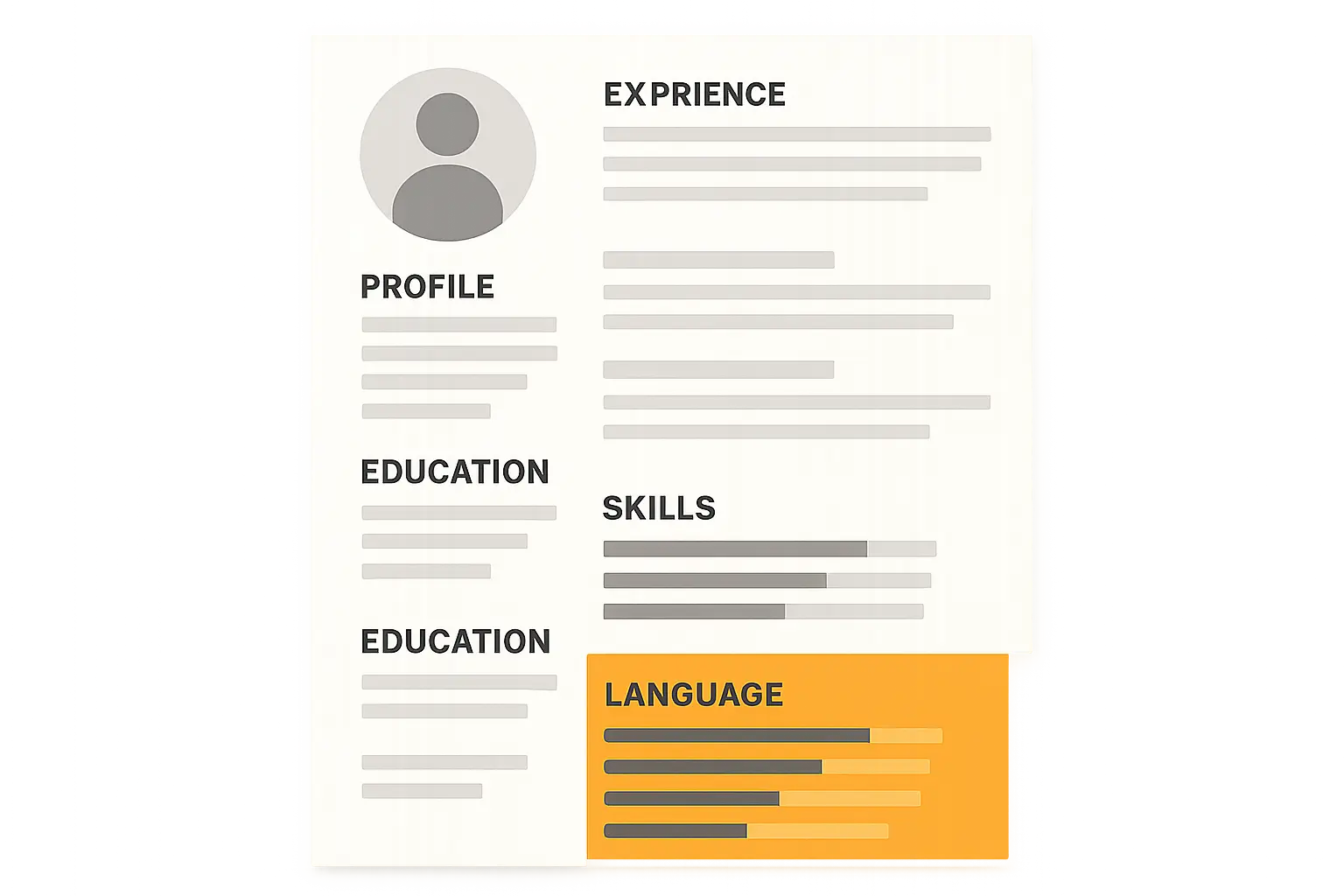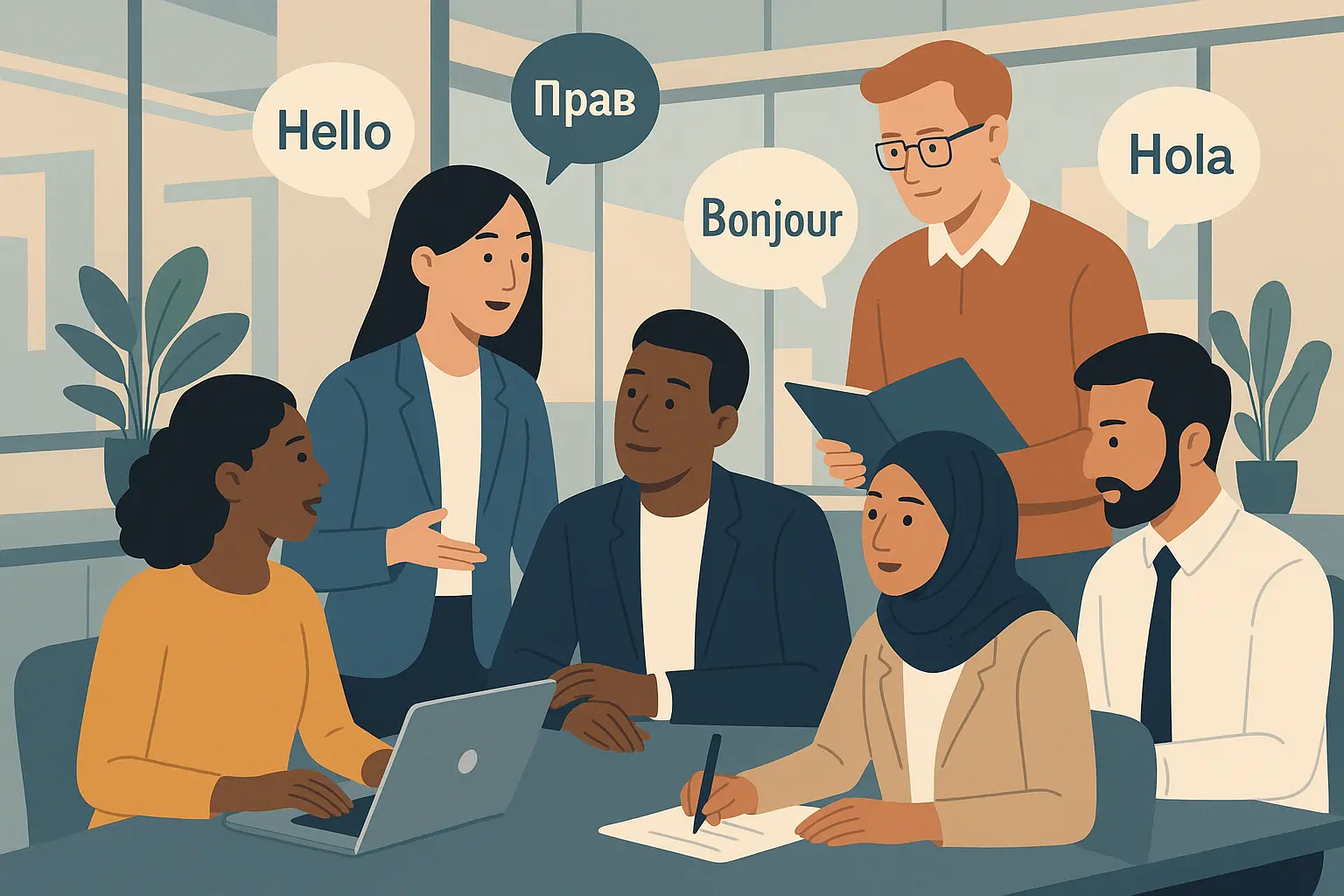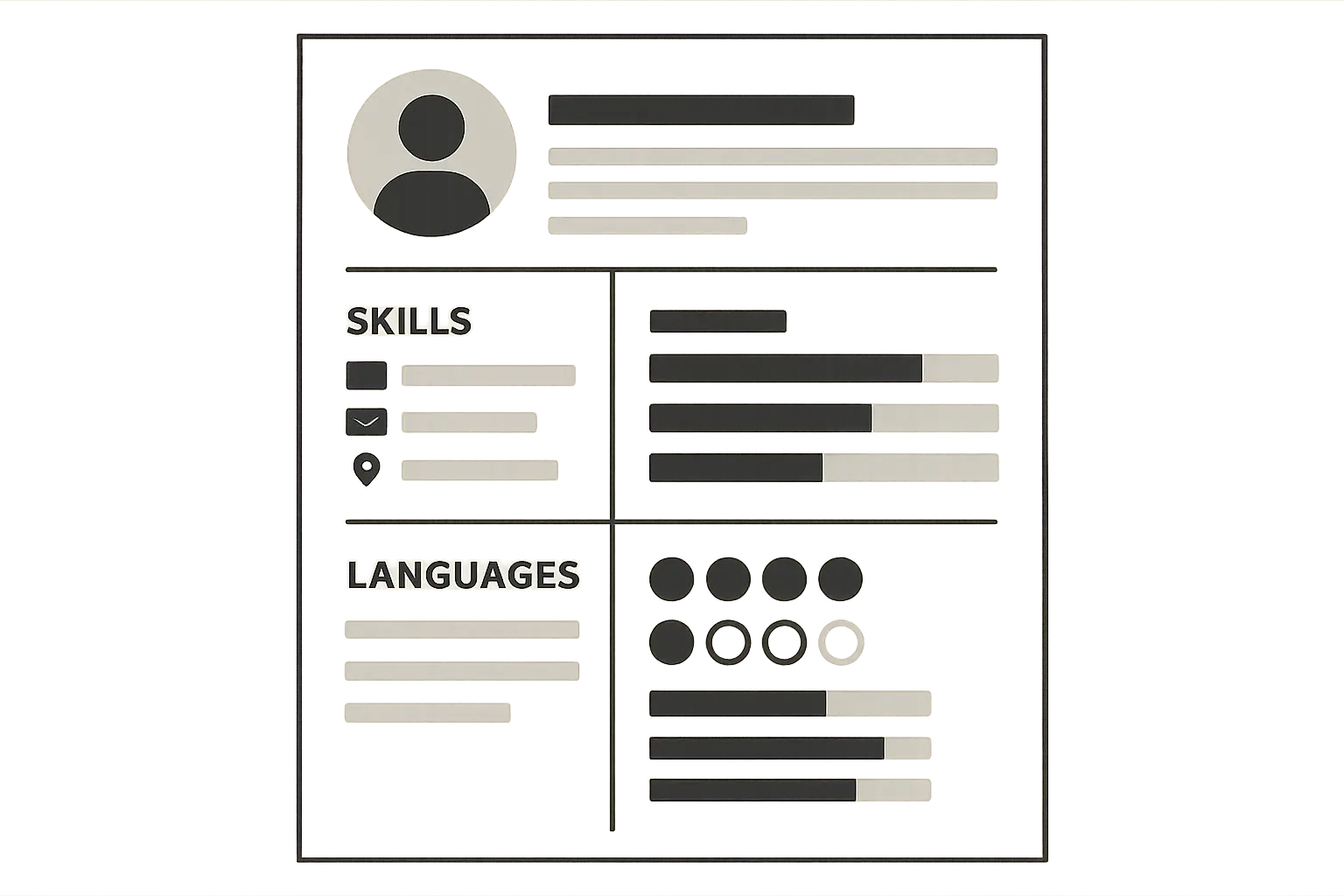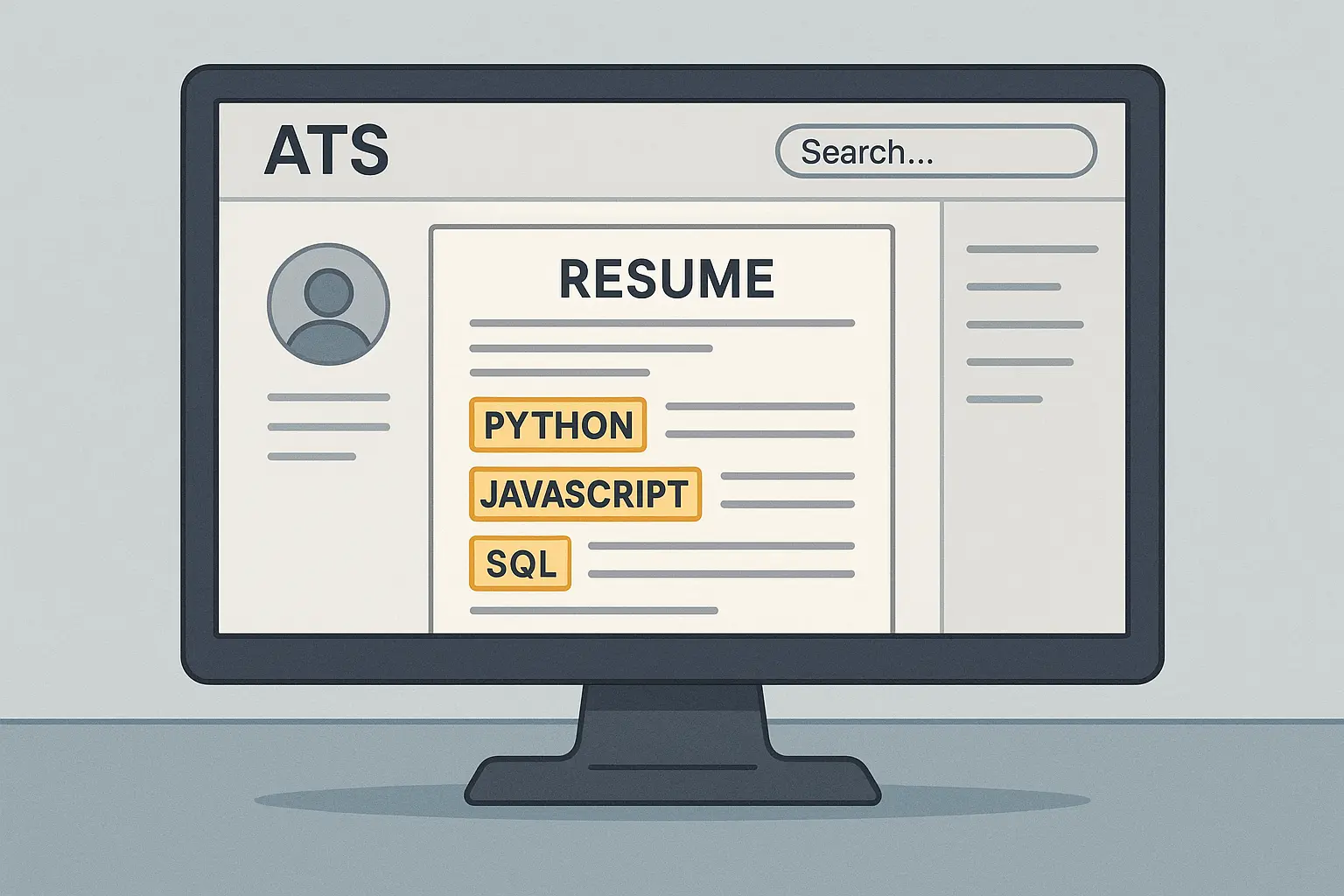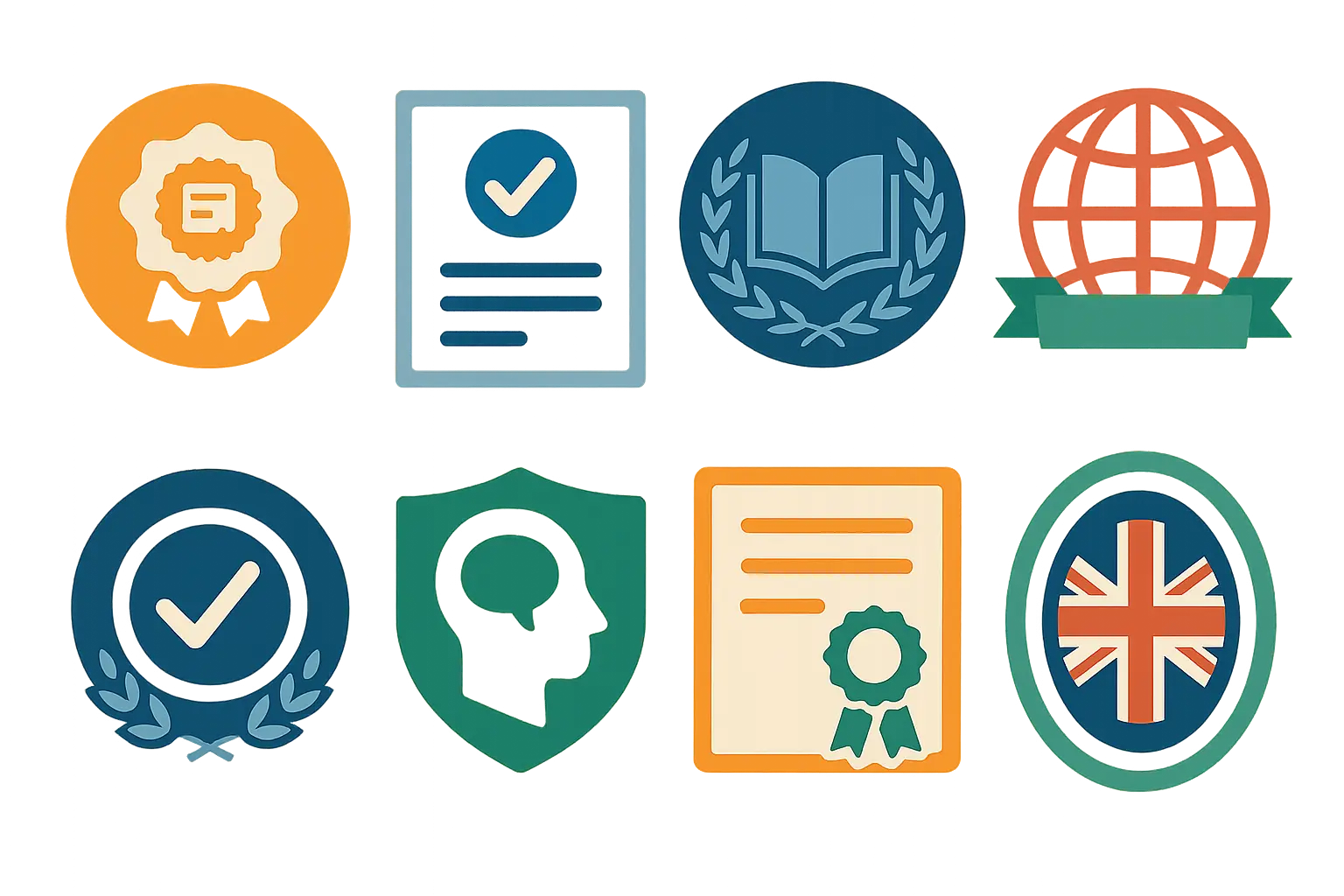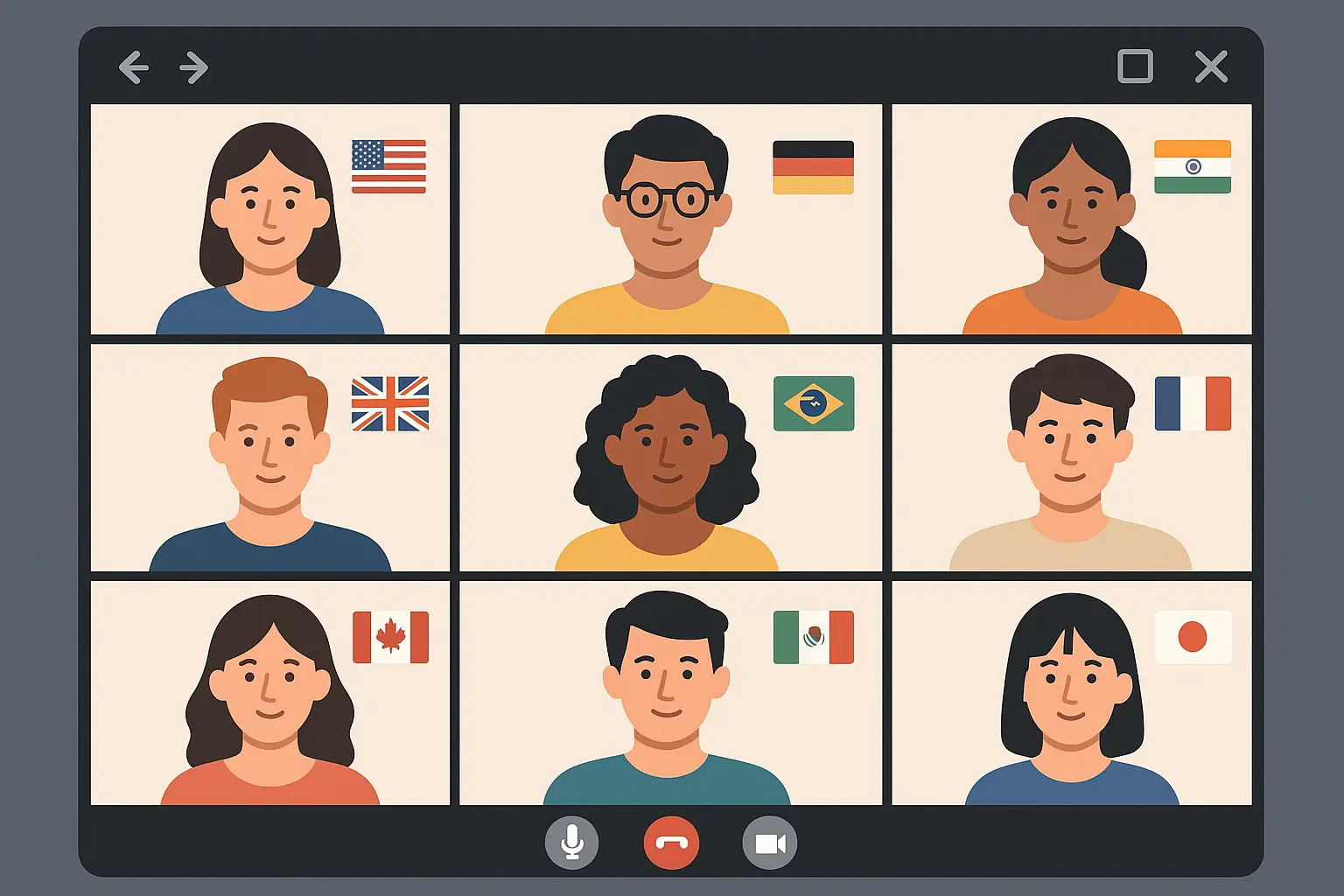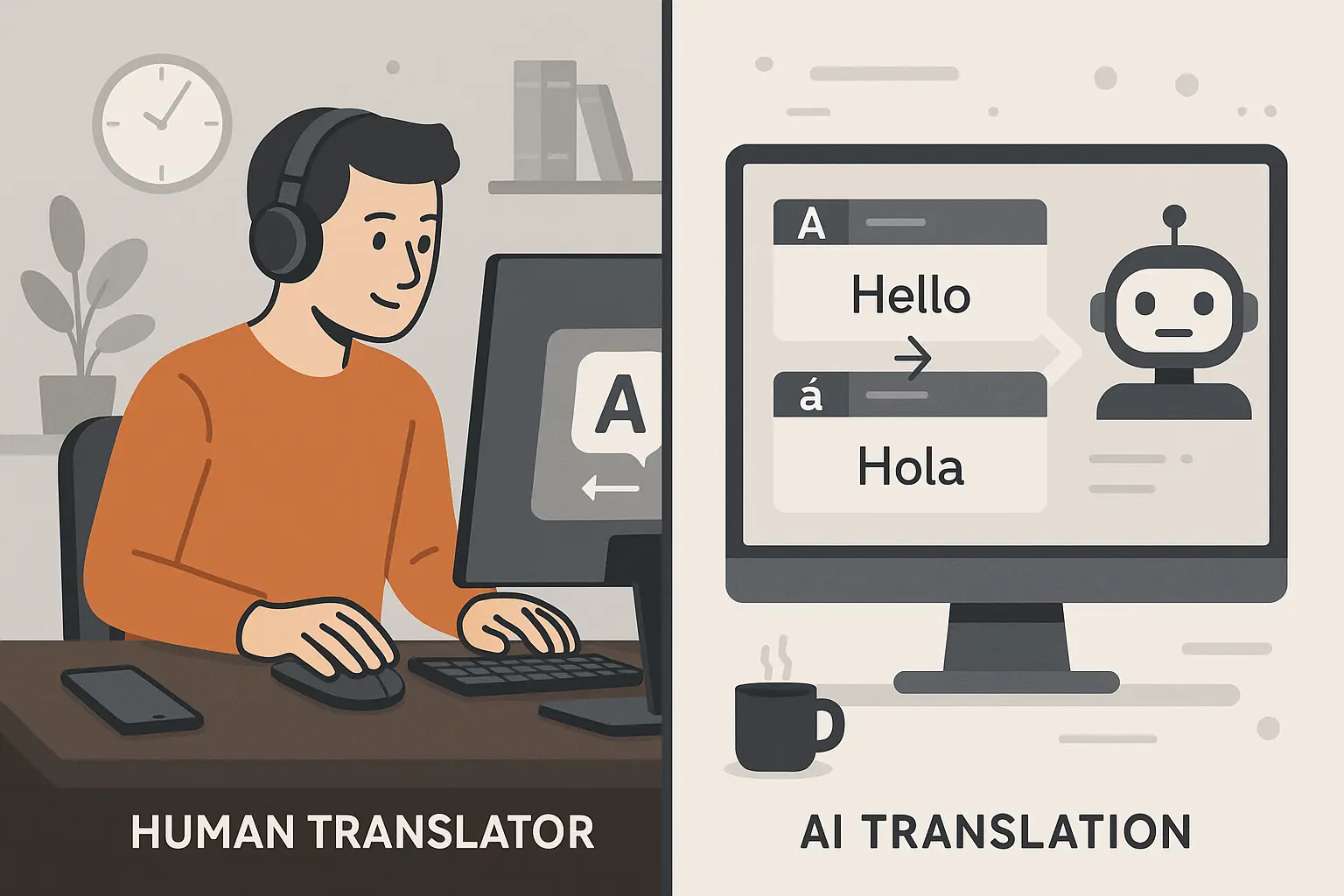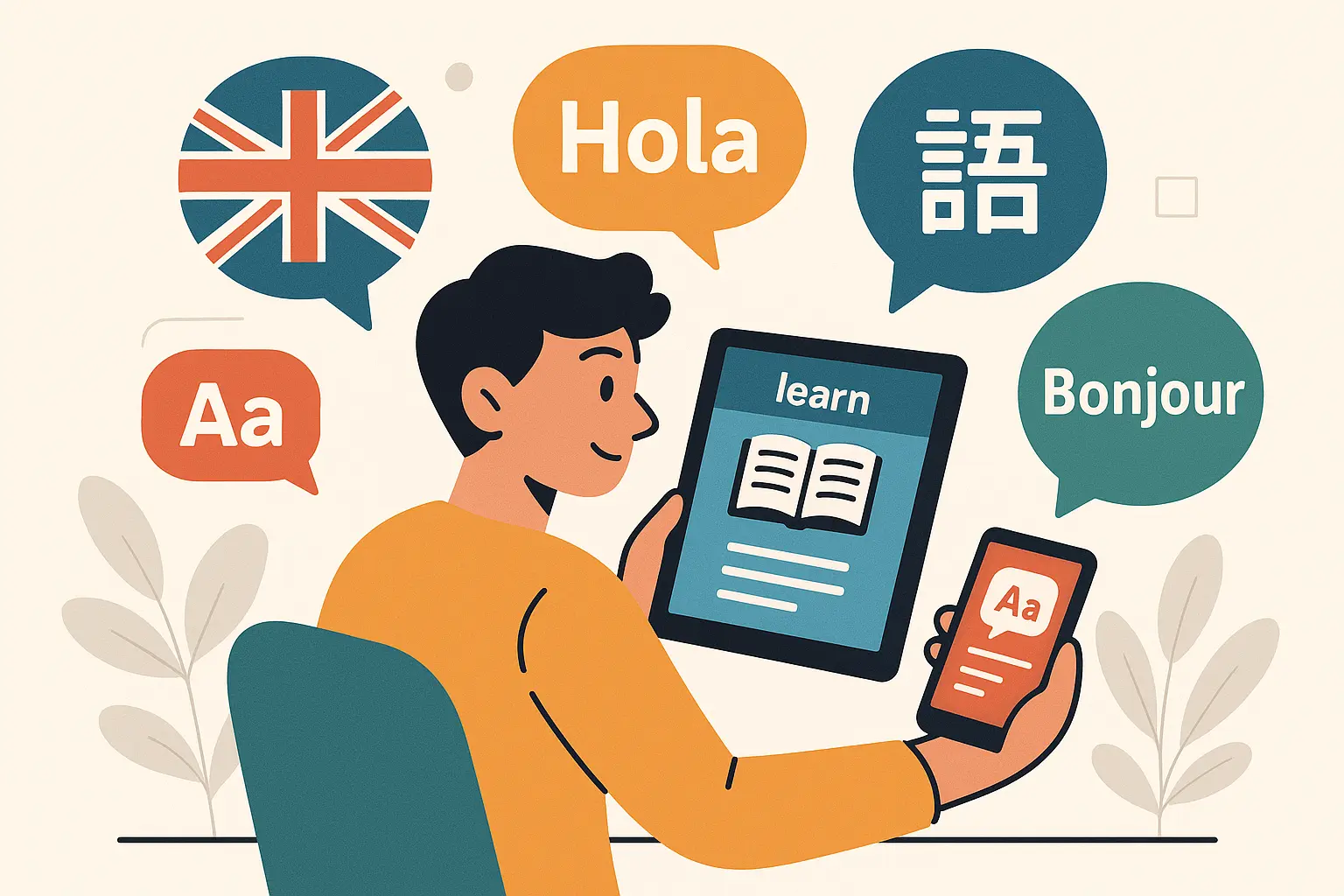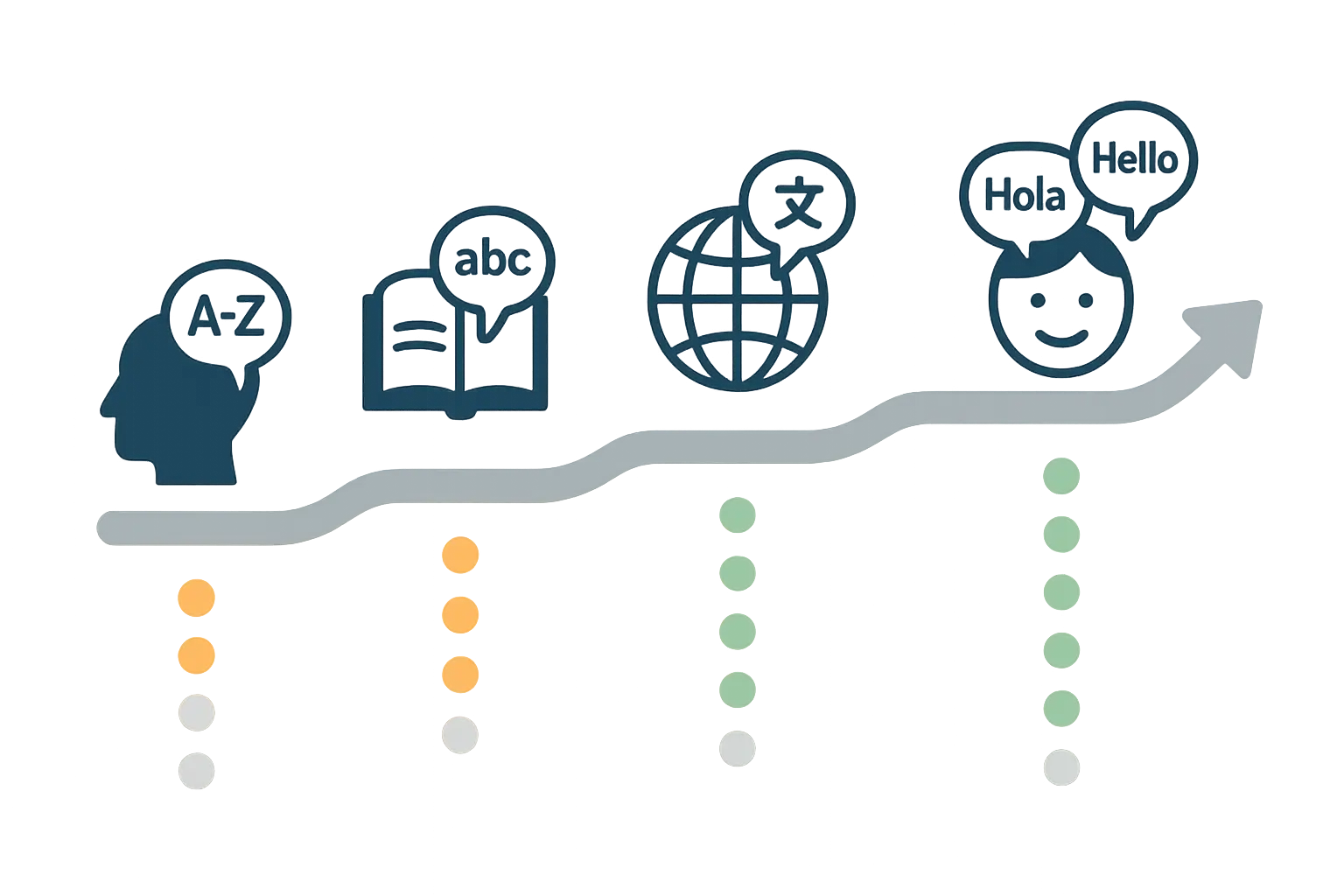Resume Language Skills That Actually Get You Hired (Not Just Listed)

Speak another language? That’s awesome – and it could be your ticket to landing a better job. A 2019 survey of 1,200 U.S. employers found nine out of 10 employers across the country rely on employees with language skills other than English, with more than half expecting their demand for multilingual staff to increase in the next five years.
But here’s the thing: just slapping “Spanish: Fluent” on your resume won’t cut it anymore. I’ve learned that how you present your language skills matters way more than just listing them. The difference between getting noticed and getting passed over often comes down to showing employers exactly what you can do with those languages.
Table of Contents
-
Don’t Just List Languages – Show What You Can Do
-
Stop Guessing Your Skill Level
-
Where to Actually Put Languages on Your Resume
-
Beat the Resume Robots (ATS Optimization)
-
Show the Money (Quantify Your Impact)
-
Remote Work Changes Everything
-
Working With AI Translation Tools
TL;DR
-
Use real frameworks like CEFR or ACTFL instead of vague terms like “conversational”
-
Put languages where they’ll have the biggest impact – dedicated sections for language-heavy jobs, skills sections for supporting abilities
-
Copy the job description’s exact language to get past ATS systems
-
Show measurable results from your language skills – revenue, efficiency, client satisfaction
-
Highlight virtual communication abilities for remote positions
-
Position yourself as someone who enhances AI translation tools, not competes with them
Don’t Just List Languages – Show What You Can Do
Stop putting “Spanish: Fluent” on your resume and calling it a day. That tells employers nothing useful. Instead, think about what they actually want to know: Can you handle a client call in Spanish? Write professional emails? Lead a meeting?
The trick is being specific about what you can actually do. When you’re figuring out the fundamentals of what to put on your resume, remember that language skills need to integrate seamlessly with your overall professional story, not just sit there as random facts.
Multicultural workplaces are more common than ever. Having someone who speaks more than one language is a huge plus for most employers, making language skills increasingly valuable across all industries and job levels. The key is positioning these abilities where they’ll have maximum impact.
Stop Guessing Your Skill Level
Nothing’s more awkward than claiming you’re fluent and then stumbling through a basic conversation in your interview. I once watched a candidate claim fluency in Mandarin, then freeze up when the interviewer switched languages mid-conversation. Don’t be that person.
Use these frameworks instead of making stuff up:
Real Assessment Frameworks That Work
Multiple internationally recognized systems exist for measuring language proficiency, and they’re way better than your gut feeling about whether you’re “conversational” or “fluent.”
|
Framework |
Levels |
Best For |
What It Actually Means |
|---|---|---|---|
|
CEFR |
A1-C2 |
International jobs |
European standard everyone recognizes |
|
ACTFL |
Novice-Distinguished |
US companies |
American system that sounds natural to HR |
|
ILR |
0-5 |
Government jobs |
What federal agencies use |
The Common European Framework Reference (CEFR) breaks things down into six clear levels from A1 (complete beginner) to C2 (basically native). Each level has specific descriptions of what you can actually do – no guessing required.
American Council Standards (ACTFL) uses terms like Novice, Intermediate, Advanced, and Superior that American hiring managers understand immediately. These feel natural and integrate smoothly into corporate hiring processes.
Instead of “Spanish: Conversational,” try “Spanish: CEFR B2 – Can handle client calls, write professional emails, participate in meetings with occasional minor errors.” See the difference? Now they know exactly what they’re getting.
Industry Reality Check
Different fields have wildly different expectations for language skills. Corporate jobs might be fine with “business proficient,” but if you’re applying to translate medical documents, you better have the specialized vocabulary to back it up.
Technical fields like legal, medical, or engineering demand higher proficiency and specialized vocabulary that general language skills don’t cover. You wouldn’t want to claim medical Spanish fluency if you can’t discuss pharmaceutical interactions confidently.
Global companies often look for specific regional language combinations and cultural knowledge that goes beyond basic grammar and vocabulary. They want someone who understands business customs, not just verb conjugations.
Where to Actually Put Languages on Your Resume
This isn’t rocket science, but I see people mess it up constantly. The placement depends entirely on how important languages are for the specific job you want.
When you’re thinking about overall document structure, make sure you understand professional resume formatting principles so your language section looks polished and professional alongside everything else.
Dedicated Language Section Strategy
Create a specific “Languages” section when multilingual abilities are central to the role – translation jobs, international sales, diplomatic positions, customer service for global companies. This gives your languages prime real estate and signals they’re core to your professional identity.
This approach works best when you speak three or more languages, have formal certifications, or when the job posting specifically emphasizes multilingual requirements. Don’t waste valuable resume space on a dedicated section if languages are just a nice bonus.
Skills Section Integration
Tuck language skills into broader competency areas like “Technical Skills” or “Core Competencies” when they provide supporting value rather than primary qualifications. This saves space while still highlighting your multilingual capabilities.
This method works well for roles where languages are mentioned as “preferred” rather than “required,” or when you’re tight on space and need to prioritize other qualifications.
Format That Actually Works
Here’s a format that covers all the bases: “LANGUAGES: Spanish (Native) | French (DELF B2 Certified) | Mandarin (HSK Level 4) – Applied in client relations across LATAM, European, and APAC markets.”
That one line shows your proficiency levels, proves them with certifications, and connects them to real business applications. It’s specific, credible, and relevant.
Beat the Resume Robots (ATS Optimization)
Even amazing language skills won’t help if the computer system never sees them. Applicant Tracking Systems are picky about how you format things, so you need to play by their rules.
Understanding ATS-friendly resume formatting ensures your multilingual abilities actually reach human reviewers who can appreciate their value. The technology is getting smarter, but it still has blind spots you need to work around.
Match the Job Description Exactly
If the job posting says “bilingual Spanish speaker,” don’t write “fluent in Spanish.” Use their exact words. The ATS is looking for specific matches, not creative interpretations.
This isn’t about keyword stuffing – it’s about speaking the same professional language as your target employers. Pay attention to whether companies use “bilingual,” “multilingual,” or specific proficiency terms, then mirror that language exactly.
ATS-Friendly Formatting Rules
Use standard headers like “Languages,” “Language Skills,” or “Language Proficiencies.” Creative section titles might confuse parsing algorithms and cause your language skills to be miscategorized or ignored entirely.
Skip fancy graphics, tables, or unusual formatting that might not translate properly through ATS processing. Stick to simple, scannable bullet points with consistent structure that both robots and humans can read easily.
Weave Languages Throughout Your Resume
Don’t just list Spanish in your skills section and forget about it. Mention it in your work experience too: “Conducted Spanish-language client presentations resulting in 15% increase in customer satisfaction” or “Managed bilingual customer service operations for 500+ daily interactions.”
This strategy gives you more keyword density for ATS systems while demonstrating practical application of your language skills in professional settings.
Show the Money (Quantify Your Impact)
Numbers make everything more convincing. Instead of just saying you speak French, show what that French actually accomplished for your employers.
Business Impact Metrics
Connect your language abilities to concrete business outcomes that hiring managers can understand and value. Sales figures, efficiency improvements, and customer satisfaction scores all work well.
“Increased Spanish-speaking customer base by 40% through targeted bilingual marketing campaigns” shows direct business value, not just personal capability. “Reduced project communication delays by 30% through trilingual coordination” demonstrates operational efficiency.
According to Preply’s survey of job ads and full-time staff, “multilingual employees earn an average of 19% more than monolingual ones and are also 5% more likely to receive a raise”, so your languages are literally worth money – make sure your resume reflects that.
Certification Scores Add Credibility
Include specific test scores from TOEFL, IELTS, DELE, or DALF when you have them. These internationally recognized benchmarks carry more weight than self-assessed proficiency levels and provide third-party validation.
Industry-specific certifications like legal or medical translation credentials demonstrate specialized expertise that commands premium positioning. Even Duolingo certificates are better than nothing – they show you’re actively working on improvement.
Remote Work Changes Everything
Working from home has made language skills even more valuable, but in different ways. Now you need to prove you can handle multilingual video calls, not just face-to-face conversations.
When you’re considering how to list language skills on resume documents for remote positions, the emphasis shifts toward virtual communication competencies and cross-cultural collaboration abilities in digital environments.
Virtual Communication Skills
Can you lead a Zoom meeting in Spanish while sharing your screen and dealing with audio delays? That’s a specific skill set that didn’t exist five years ago, and it’s incredibly valuable now.
Digital Platform Proficiency
Highlight experience with multilingual video conferencing, virtual presentations, and cross-cultural digital communication. These skills go beyond basic language proficiency to include technical comfort and cultural sensitivity in digital environments.
Video conferencing in multiple languages requires different skills than in-person communication – dealing with audio delays, technical issues, and screen sharing while maintaining professional communication across language barriers and time zones.
Written Digital Communication
Multilingual email, chat platforms, and collaborative document editing have become essential for remote team effectiveness. These written communication skills often require different vocabulary and cultural awareness than spoken abilities.
Collaborative document editing in multiple languages requires real-time translation skills, cultural context awareness, and the ability to maintain consistency across language versions – all valuable technical writing competencies.
Global Team Integration
Being the cultural bridge between your American team and your Colombian clients is a huge value-add. Don’t just mention your Spanish – talk about how you prevent misunderstandings and build relationships across cultures.
These interpersonal abilities complement traditional soft skills on your resume and demonstrate advanced cultural competency that employers increasingly value in global markets.
Cross-Cultural Leadership
Beyond linguistic ability, showcase skills in cultural translation, conflict resolution, and cross-cultural project management. These soft skills combined with language abilities create powerful professional differentiators.
Cultural translation involves explaining context, customs, and business practices between different cultural groups – not just converting words between languages. This skill prevents costly misunderstandings and builds stronger international business relationships.
“Facilitated weekly trilingual project meetings (English/Spanish/Portuguese) for 12-person distributed team across North and South America, resulting in 25% faster project delivery and zero cultural miscommunication incidents over 18 months.”
That’s not just language skills – that’s measurable leadership impact.
International Client Relations
Experience managing relationships with global clients, understanding regional business practices, and navigating cultural nuances creates competitive advantages that go well beyond basic language proficiency.
Regional business practice knowledge includes understanding different negotiation styles, contract preferences, and relationship-building approaches that vary significantly by culture and geographic region. This expertise helps companies avoid costly cultural missteps.
Research shows Spanish, Chinese and French being the most in-demand languages among employers, with international client relations being a primary application area for these multilingual competencies.
Working With AI Translation Tools
AI isn’t replacing human translators – it’s changing what we need to be good at. Now you need to know how to make AI translations actually sound human and culturally appropriate.
Your resume language skills need to reflect this technological shift. The professionals who thrive are those who understand how to leverage technology while adding irreplaceable human value that machines simply can’t provide.
According to Straits Research, “the number of language-learning apps is only growing: their market size was valued at $6.34 billion in 2024 and is estimated to reach $24.39 billion by 2033”, indicating massive growth in AI-assisted language learning and translation technologies.
AI Collaboration Skills
The future belongs to people who can take Google Translate output and make it culturally appropriate and business-ready. That requires understanding what machines consistently miss: context, tone, cultural nuances, and industry-specific terminology.
Quality Assurance Abilities
Show that you can review, edit, and improve AI-generated translations. This demonstrates advanced language competency combined with technical adaptability – a combination many employers now actively seek.
AI translation quality assurance requires understanding common machine translation errors, cultural context gaps, and technical terminology limitations that automated systems frequently miss or misinterpret.
Post-editing AI translations involves more than proofreading – it requires understanding the source material’s intent, target audience expectations, and cultural appropriateness that machines can’t fully grasp.
|
AI Translation Tool |
Best For |
Human Enhancement Needed |
|---|---|---|
|
Google Translate |
Basic communication |
Cultural context, idioms |
|
DeepL |
Professional documents |
Industry terminology, tone |
|
Microsoft Translator |
Business correspondence |
Regional variations, formality |
|
Amazon Translate |
Technical content |
Specialized vocabulary, accuracy |
Cultural Context Enhancement
Adding cultural nuance, idiomatic expressions, and contextual appropriateness to AI translations represents a valuable skill set that complements technological capabilities rather than competing with them.
Cultural context enhancement involves understanding regional variations, generational differences, and industry-specific communication styles that AI systems often miss or completely misinterpret.
Show employers you enhance technology rather than fear it: “Improved AI translation accuracy by 40% through cultural context editing and idiomatic expression correction for client communications across 15 international markets.”
Keep Learning (And Show It)
Language skills aren’t set-it-and-forget-it. Show you’re actively improving through apps, online courses, or virtual immersion programs. This demonstrates the continuous learning mindset employers love.
When building your professional profile, consider balancing hard and soft skills to showcase both your technical language abilities and cultural competencies effectively.
Digital Learning Platform Usage
Highlight experience with language learning apps, online courses, or virtual immersion programs. This shows you embrace modern learning methodologies and can adapt to new technologies for professional development.
Language learning app proficiency (Duolingo, Babbel, Rosetta Stone) demonstrates consistent self-directed learning habits and comfort with gamified professional development approaches. Many employers view this digital learning comfort as transferable to other skill development areas.
Virtual immersion program participation shows commitment to advanced language development and cultural understanding that goes beyond casual learning approaches. These intensive programs demonstrate serious professional development investment.
Professional Development Integration
Connect your language learning to career advancement goals and professional development plans. This strategic approach shows employers that you view language abilities as professional assets, not personal hobbies.
Career-aligned language learning involves choosing languages and proficiency levels that directly support your professional goals and industry requirements. This demonstrates business thinking and strategic career management abilities.
Professional development planning that includes language skills shows long-term career vision and commitment to continuous improvement that many employers find attractive in candidates.
Language Skills Development Checklist:
-
Assess current proficiency using standardized frameworks (CEFR, ACTFL, ILR)
-
Identify target languages based on career goals and industry needs
-
Obtain formal certifications or test scores for credibility
-
Document practical applications and measurable outcomes
-
Update skills regularly through digital platforms or courses
-
Practice AI translation collaboration and quality assurance
-
Develop cultural context and cross-cultural communication abilities
-
Integrate language skills strategically throughout resume sections
How can Resume Builder IQ help you present your language skills more effectively? Our AI-powered platform transforms basic language entries into compelling professional descriptions with quantifiable achievements. Instead of listing “Spanish: Fluent,” our system helps you create impactful statements like “Facilitated Spanish-language client communications resulting in 25% increase in customer satisfaction scores.” With industry-specific templates and ATS optimization features, you can ensure your multilingual competencies are properly formatted and recognized by both tracking systems and hiring managers.
Bottom Line
Your language skills could be the thing that sets you apart – if you present them right. Stop treating them like a hobby and start positioning them as the professional assets they are.
Be specific about what you can do, prove it with numbers and certifications, format it for ATS systems, and show how you add human value in our AI-enhanced world. Don’t just list languages – demonstrate how they’ve made you money, saved time, or solved problems.
The key is moving beyond basic proficiency claims to show measurable business impact. Whether you’re highlighting virtual communication abilities for remote positions, showcasing AI collaboration skills for tech roles, or quantifying international business results for corporate positions, make your multilingual competencies integral parts of your professional identity.
In today’s global marketplace, being multilingual isn’t just nice to have – it’s a competitive advantage that can literally increase your earning potential by 19%. Make sure your resume reflects that value, and you’ll stand out in a sea of monolingual candidates who are missing out on this massive opportunity.
Your language skills represent adaptability, cultural competency, and global thinking that modern employers desperately need. Take the time to assess, format, and present them strategically – they might just be the differentiator that lands you that next opportunity in our increasingly connected professional world.

